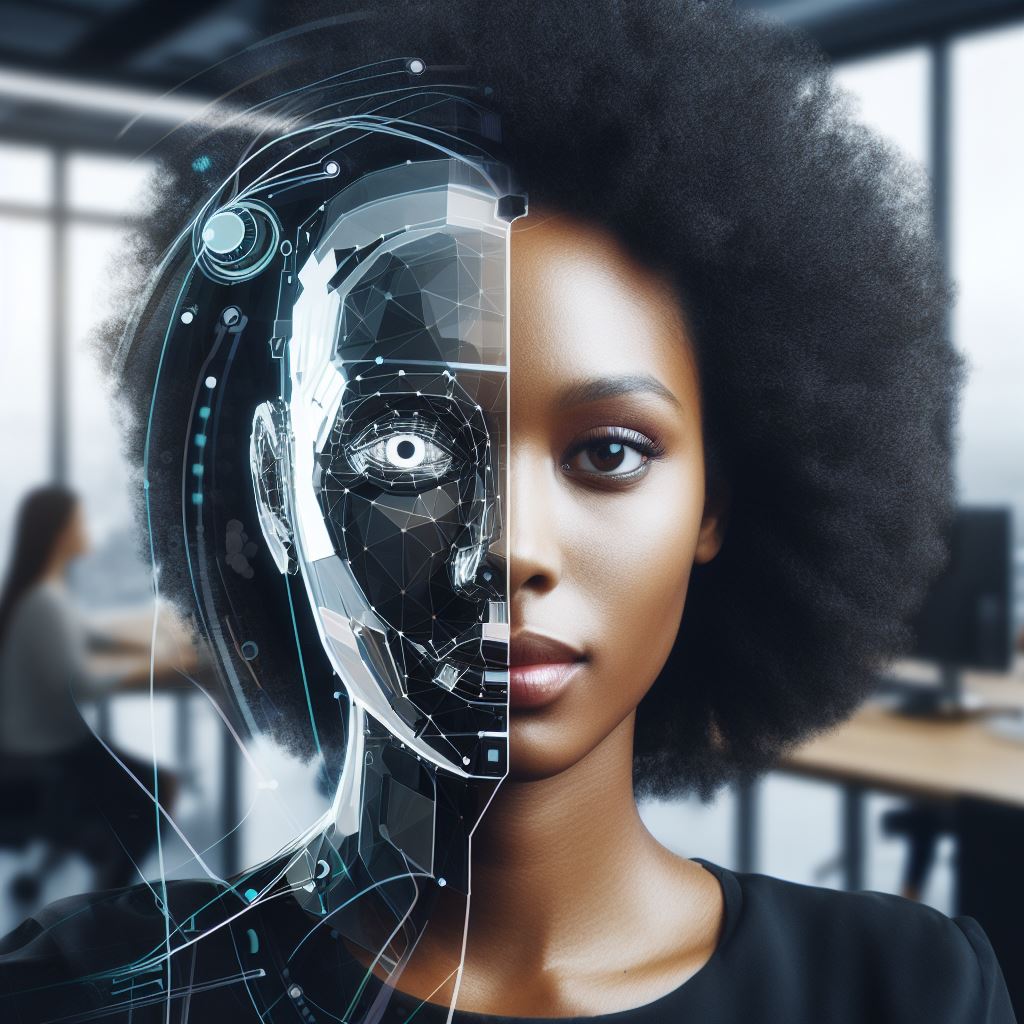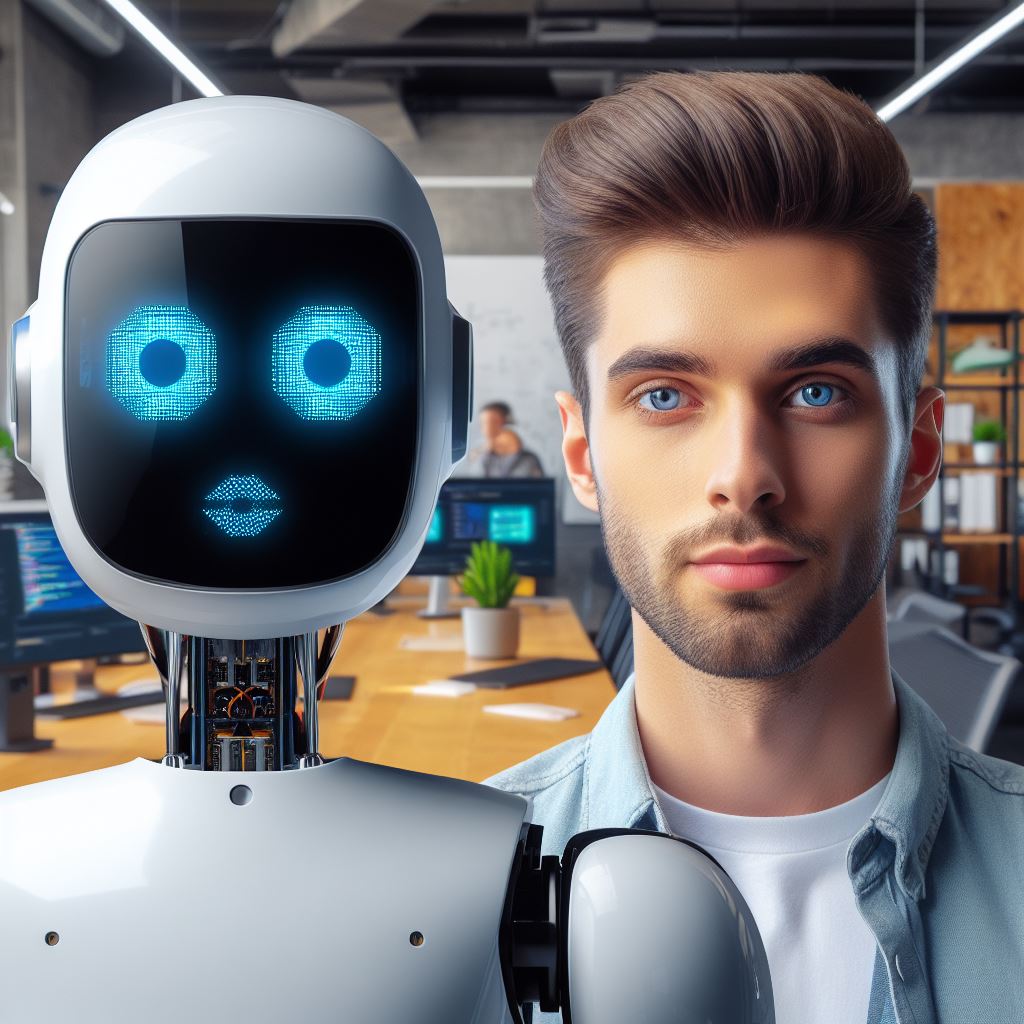Introduction
Machine learning and AI coding are two distinct concepts that are often confused with each other in the field of technology. This blog post explores Machine Learning vs AI Coding.
It is crucial to understand the difference between these two terms as they have different applications and functionalities.
Importance of understanding the difference
Knowing the dissimilarity between machine learning and AI coding is essential for several reasons. Firstly, it allows professionals to develop a clear understanding of the technologies they are working with.
This understanding is vital for effective problem-solving and decision-making.
Secondly, comprehending the disparity between these two concepts enables individuals to choose the right approach for their specific requirements.
Machine learning focuses on training models using data, while AI coding involves developing algorithms and rules to mimic human behavior.
Furthermore, understanding this difference helps in setting realistic expectations for project outcomes.
Machine learning algorithms require large amounts of data to achieve accurate results, whereas AI coding can often provide immediate responses based on predefined rules.
Lastly, knowing the dissimilarity between these terms aids in effective communication within the industry.
It ensures that professionals can discuss and collaborate on projects with clarity, avoiding any confusion or misinterpretation.
In essence, machine learning and AI coding are distinct yet interconnected concepts.
Understanding the difference between them is crucial for professionals in the technology field as it enables them to make informed decisions, set realistic expectations, and communicate effectively.
Explanation of AI Coding
AI coding refers to the process of developing software or algorithms that replicate human-like intelligence.
Definition of AI Coding
AI coding involves writing programs that enable machines to learn from data and make decisions or perform tasks without explicit instructions.
Application of AI Coding in Various Industries
- Healthcare: AI coding can be used for disease diagnosis, drug discovery, and personalized treatment plans.
- Finance: AI coding is utilized for fraud detection, algorithmic trading, and risk assessment.
- Retail: AI coding can enhance customer experience with personalized recommendations and inventory management.
- Manufacturing: AI coding is applied for quality control, predictive maintenance, and robotics automation.
- Transportation: AI coding enables self-driving cars, traffic optimization, and route planning.
Examples of AI Coding in Real-World Scenarios
- Natural Language Processing (NLP) in Virtual Assistants: Virtual assistants like Siri and Alexa utilize AI coding to understand and respond to human speech.
- Image Recognition in Security Systems: AI coding is used in security systems to recognize and identify individuals from surveillance footage.
- Recommendation Systems in E-commerce: AI coding powers recommendation engines that suggest products based on user preferences and behavior.
- Autonomous Vehicles: Self-driving cars rely on AI coding to analyze sensor data and make real-time driving decisions.
- Fraud Detection in Banking: AI coding algorithms can identify unusual patterns and behaviors to detect fraudulent banking activities.
Overall, AI coding is revolutionizing various industries by automating processes, improving efficiency, and enabling intelligent decision-making.
Tech Consulting Tailored to Your Coding Journey
Get expert guidance in coding with a personalized consultation. Receive unique, actionable insights delivered in 1-3 business days.
Get StartedThe applications and examples mentioned above illustrate the versatility and potential of AI coding in the real world.
Read: Certifications Vs. Degrees: What Employers Prefer
Explanation of machine learning
Machine learning is a subset of artificial intelligence that focuses on developing algorithms capable of learning and making predictions autonomously.
Rather than explicitly programming rules and instructions, machine learning models “learn” patterns and make decisions based on data.
Definition of machine learning
Machine learning is a branch of AI that enables computers to learn from data without being explicitly programmed.
How machine learning differs from traditional coding
- Approach: In traditional coding, programmers write explicit instructions for the computer to follow. In machine learning, algorithms learn patterns from data and make predictions.
- Flexibility: Traditional code follows a fixed set of rules, while machine learning algorithms can adapt to changing data and improve their performance over time.
- Automation: Machine learning algorithms can automate the process of making predictions or decisions, reducing manual effort.
- Scalability: Machine learning can handle large amounts of data and make complex decisions, while traditional coding may struggle with scalability.
Examples of machine learning algorithms
- Supervised learning: These algorithms learn from labeled data to make predictions or classifications. Examples include decision trees, random forests, and support vector machines.
- Unsupervised learning: These algorithms analyze unlabeled data to discover patterns or groupings. Clustering algorithms like k-means and hierarchical clustering fall under this category.
- Reinforcement learning: In this type of learning, algorithms learn from trial and error to maximize rewards in a given environment. It is commonly used in game-playing AI systems like AlphaGo.
Numerous applications of machine learning across various industries
- Healthcare: Predicting disease outbreaks, diagnosing medical conditions, and personalized treatment recommendations.
- Finance: Fraud detection, credit risk assessment, algorithmic trading.
- Marketing: Customer segmentation, personalized recommendations, predicting customer churn.
- Transportation: Autonomous vehicles, traffic prediction, route optimization.
- E-commerce: Product recommendations, demand forecasting, price optimization.
Advantages of machine learning
- Automation: ML algorithms can automate repetitive tasks and make accurate predictions, reducing manual effort and increasing efficiency.
- Adaptability: ML models can adapt to new data and improve their performance over time, allowing businesses to stay up-to-date with changing trends.
- Decision-making: ML algorithms can make complex decisions based on large amounts of data, leading to better insights and outcomes.
- Personalization: ML enables businesses to offer personalized experiences and recommendations to users, increasing customer satisfaction and engagement.
In fact, machine learning is a powerful subset of artificial intelligence that enables machines to learn from data and make predictions autonomously.
It differs from traditional coding by relying on algorithms that learn from patterns rather than explicit instructions.
Machine learning algorithms can be supervised, unsupervised, or reinforcement-based, and they have applications across various industries.
With its automation, adaptability, and decision-making capabilities, machine learning has the potential to revolutionize numerous sectors and improve efficiency and customer experiences.
Read: Success Stories: U.S. Self-Taught Developers Making It Big
Key differences between AI coding and machine learning
Focus of AI coding on simulating human intelligence and machine learning on analyzing and learning from data
- AI coding focuses on simulating human intelligence, while machine learning focuses on analyzing and learning from data.
- AI coding is primarily concerned with developing algorithms and techniques to mimic human intelligence.
- Machine learning, on the other hand, is focused on the development of algorithms that can automatically learn and improve from experience.
- AI coding involves creating systems that can reason, understand natural language, and adapt to new situations.
- Machine learning, on the other hand, enables computers to automatically learn patterns and make predictions or take actions based on data.
- AI coding is commonly used in areas such as virtual assistants, image recognition, and natural language processing.
- Machine learning techniques are extensively utilized in tasks such as spam filtering, recommendation systems, and fraud detection.
Types of problems solved by AI coding vs. machine learning
- The types of problems solved by AI coding are often complex and require a deep understanding of human cognition and behavior.
- Machine learning, on the other hand, can be applied to a wide range of problems, including pattern recognition, clustering, and regression.
- AI coding typically requires a predefined set of rules or knowledge base, which needs to be explicitly programmed.
- Machine learning, on the other hand, learns from data and doesn’t rely on predefined rules or explicit programming.
- AI coding often involves symbolic reasoning and knowledge representation techniques to simulate human-like intelligence.
- Machine learning, on the other hand, utilizes statistical and mathematical models to analyze and interpret patterns in data.
- The development process of AI coding often requires domain experts to provide extensive input and guidance.
- Machine learning, on the other hand, relies more on data scientists and machine learning engineers to train and fine-tune models.
- AI coding is focused on creating intelligent systems that can understand, reason, and make decisions similar to humans.
- Machine learning, on the other hand, is centered around developing models that can automatically improve and make accurate predictions.
In short, AI coding and machine learning serve distinct purposes and address different problem domains.
AI coding aims to simulate human intelligence, while machine learning focuses on analyzing and learning from data.
Both fields have their unique applications and contribute to the advancement of artificial intelligence.
Read: Practical AI Projects You Can Code Today: Top Picks
Build Your Vision, Perfectly Tailored
Get a custom-built website or application that matches your vision and needs. Stand out from the crowd with a solution designed just for you—professional, scalable, and seamless.
Get Started
Benefits and Limitations of AI Coding
Advantages of AI coding in automation and decision-making
- Efficiency: AI coding enables automation of repetitive tasks, increasing productivity and saving time.
- Precision: AI algorithms make accurate decisions based on large amounts of data, reducing human errors.
- Scalability: AI systems can handle large-scale operations, processing vast amounts of information quickly.
- Speed: AI coding accelerates processes, enabling real-time decision-making in various industries.
- 24/7 Availability: AI-powered systems can operate continuously, providing round-the-clock services.
In automation, AI coding streamlines workflow processes by automating repetitive and time-consuming tasks.
This not only enhances efficiency but also enables employees to focus on more complex and creative work.
For example, AI-powered chatbots can handle customer inquiries, freeing up human agents to handle more complex issues.
In decision-making, AI coding analyzes massive datasets and identifies patterns that humans may miss.
This enables businesses to make data-driven decisions, improving operational efficiency and competitiveness.
AI algorithms can predict customer behavior, optimize supply chains, and identify fraud or security threats.
Limitations in terms of adaptability and human-like comprehension
- Limited Contextual Understanding: AI coding struggles to comprehend the nuances of human language and context.
- Emotional Intelligence: AI lacks emotional understanding, making it difficult to interpret emotional cues accurately.
- Creativity and Intuition: AI coding still falls short in terms of creative problem-solving and intuitive decision-making.
- Adaptability to Change: AI systems require human intervention to adapt to new scenarios or unexpected situations.
- Ethical Dilemmas: AI coding raises ethical concerns regarding privacy, bias, and potential job displacement.
Despite these limitations, AI coding offers significant benefits and potential for various industries.
Its ability to automate tasks, make accurate decisions, and process vast amounts of data has transformative implications.
Limitations faced by AI coding concerning adaptability and human-like comprehension
However, AI coding faces limitations concerning adaptability and human-like comprehension. AI struggles to understand human language contextually and lacks emotional intelligence.
These limitations hinder AI systems’ ability to engage in natural conversations or fully understand the emotional aspects of human interaction.
Moreover, AI coding falls short in terms of creativity and intuition. Complex problem-solving that involves creative thinking and intuitive decision-making is still a challenge for AI systems.
They rely on predefined algorithms and lack the ability to think abstractly or consider novel approaches.
AI coding also requires human intervention to adapt to new scenarios or unexpected situations.
While AI algorithms can learn from data, they often struggle to handle unanticipated events or rapidly changing circumstances.
Optimize Your Profile, Get Noticed
Make your resume and LinkedIn stand out to employers with a profile that highlights your technical skills and project experience. Elevate your career with a polished and professional presence.
Get NoticedHuman oversight and intervention are necessary to avoid AI systems making misguided or inappropriate decisions.
Furthermore, ethical dilemmas arise with AI coding. Privacy concerns emerge as AI systems collect and analyze vast amounts of personal data.
Bias in algorithms can lead to discriminatory outcomes, reinforcing societal inequalities.
Additionally, automation driven by AI coding may result in job displacement, requiring society to address potential social and economic implications.
In a nutshell, AI coding presents numerous advantages in terms of automation and decision-making, leading to increased efficiency and precision.
However, limitations exist concerning adaptability, human-like comprehension, creativity, and ethical implications.
Understanding these benefits and limitations is crucial for harnessing the power of AI coding responsibly and ethically in different industries.
Read: Ethical Considerations in AI Coding: What You Need to Know
Benefits and Limitations of Machine Learning
Machine learning is a powerful approach to data analysis and pattern recognition, but it also has its limitations.
In this section, we will explore the advantages and disadvantages of machine learning in more detail.
Advantages of Machine Learning in Data Analysis and Pattern Recognition
- Efficient and Accurate: Machine learning algorithms can analyze large datasets and identify patterns much faster than humans, leading to more efficient and accurate results.
- Automation: Machine learning allows for the automation of complex tasks, reducing the need for time-consuming manual analysis.
- Improved Decision-Making: By uncovering hidden patterns and relationships in data, machine learning enables better decision-making and strategic planning.
- Adaptability: Machine learning models have the ability to self-learn and adapt to new data, ensuring that they stay relevant and effective over time.
- Unbiased Analysis: Machine learning algorithms can reduce biases and subjective interpretations that might be present in human analysis, leading to more objective insights.
Limitations in Terms of Data Requirements and Lack of Interpretability
- Data Proficiency: Machine learning heavily relies on high-quality and relevant data. Insufficient or inaccurate data can lead to biased outcomes and unreliable predictions.
- Data Privacy and Ethics: Machine learning raises concerns about privacy, as it often requires access to personal and sensitive information to generate accurate models.
- Interpretability: Machine learning models can be complex and difficult to interpret, making it challenging for humans to understand the logic behind their predictions.
- Overfitting and Generalization: Machine learning models may overfit the training data, resulting in poor generalization and inaccurate predictions on unseen data.
- Human Expertise: While machine learning can automate analysis, it still requires human expertise to design, validate, and fine-tune models for optimal performance.
Machine learning has revolutionized data analysis and pattern recognition, offering numerous benefits like efficiency, automation, and improved decision-making.
However, it also faces limitations in terms of data requirements, privacy concerns, interpretability, and reliance on human expertise.
Understanding these advantages and limitations is crucial for leveraging machine learning effectively in various domains and applications.
Conclusion
In this post, we have discussed the main points that differentiate machine learning from AI coding.
First, we established that machine learning is a subset of AI and focuses on the development of algorithms that enable computers to learn from and make predictions or decisions based on data.
On the other hand, AI coding involves the creation of intelligent systems that can perform tasks that would typically require human intellect, such as understanding natural language or recognizing objects in images.
We also explored the importance of understanding the difference between these two concepts in today’s evolving technological landscape.
By recognizing the distinctions between machine learning and AI coding, individuals and businesses can make informed decisions about which approach to use in specific applications.
Furthermore, understanding the difference enables organizations to effectively leverage these technologies to drive innovation, gain a competitive advantage, and enhance decision-making processes.
Moreover, knowing the distinction helps in selecting the appropriate resources, whether it is data scientists for machine learning or software engineers for AI coding.
While machine learning and AI coding are related, they serve different purposes and have distinct methods of implementation.
Understanding these differences is crucial for anyone operating in the constantly evolving technological landscape to make informed decisions and reach their desired outcomes.




